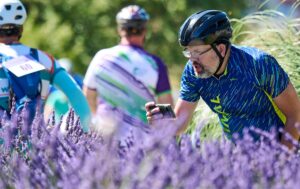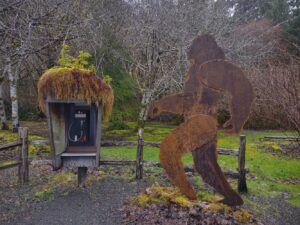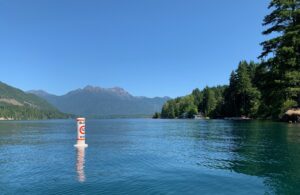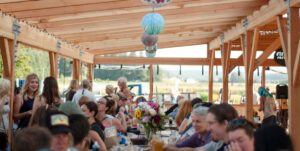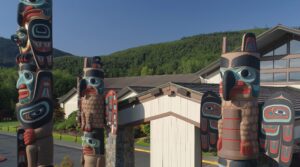Story and photos by guest-blogger/photographer, Elisabeth Brentano | ElisabethBrentano.com
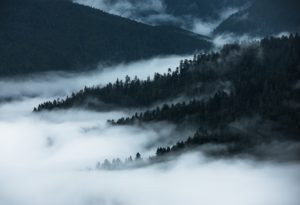
The foothills of the Olympic Mountains
The Olympic Peninsula Welcomes Me Back
I first visited the Olympic Peninsula in 2016, and I knew I had only scratched the surface of the stunning scenery and hiking trails in the region. I camped on Second Beach and spent a day hiking through the Hoh Rain Forest, so when I had the opportunity to return to Olympic National Park this summer, I was beyond thrilled to explore new territory.
My plan was to hike Hurricane Ridge and camp at Heart ‘O the Hills on my first night, but there was so much fog that afternoon, I knew there would be no view at the top. Instead, I opted to spend time at two different roadside vistas halfway up the mountain, and I was able to take in an incredible scene as layers of clouds blanketed the valley below. The fog moved in waves and danced in between the trees, and it was absolutely magical. I couldn’t have asked for a better way to kick off my trip.
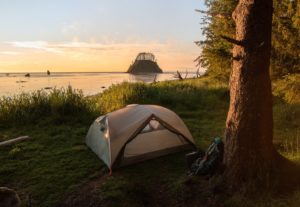
Camping in Olympic National Park’s Pacific Ocean Coast
The Pacific Ocean Was Calling
As much as I love the classic, moody forest landscapes of the Pacific Northwest, I was ready for some time on the beach. After grabbing a permit from the Olympic National Park Visitor Center in Port Angeles and a snack from The Blackbird Coffeehouse, I packed up my 65L pack and headed to the coast. In addition to purchasing a wilderness permit, you must use a bear canister when camping in Olympic National Park (you can rent one if you don’t own one). And, as always, you must follow Leave No Trace (LNT) principles when exploring these areas, to help preserve them for future visitors. (Pack out your trash, pitch your tents in established sites and be mindful of the rules regarding campfires and wood collection.)
I meandered along the Ozette Loop trail to Cape Alava, which was a relatively flat and easy 6-mile roundtrip adventure, but you can turn it into a 9-mile trek by walking down the beach and returning via the Sand Point Trail. The sunset behind the sea stacks, and though the sky was completely cloudless, it still turned a stunning shade of peachy pink and reflected on the water. With ocean views like this just steps away from camp, it’s easy to see why most folks opt for multiple nights when spending the night out here.

Hiking the boardwalks of the Ozette Loop Trail
Rejuvenation without Cell Service
After two nights of camping and hiking, I was ready for a break, so I booked a night at Chito Beach Resort, which is about an hour north of Port Angeles. The charming bungalows have ocean views, kitchens, and unique decor. I stayed in the Wolf Den, which, as you might have guessed, is home to all kinds of wolf art and furnishings — right down to the shower curtain hooks. There is a darling garden where you can enjoy coffee or a sundowner, and it’s right next to a convenience store with everything you could possibly need. There is no cell service at the resort, but there is WiFi if you absolutely must check your phone. This was the perfect stop before hitting the trail the following day, and I will definitely be back here again next year!
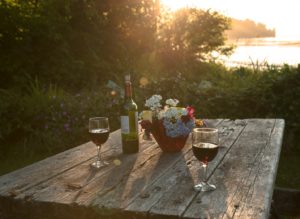
Wine at sunset on the Pacific Coast
Planning Ahead – Purchasing Permits
I planned this trip quite carefully, so when I went to the Olympic Peninsula Visitor’s Center to purchase my permit for Cape Alava, I also picked up a permit for two nights at Shi Shi Beach. In addition to a permit and a bear canister, you must also obtain a Makah Recreation Pass, which you can purchase at the Makah Mini Mart in Neah Bay if you’re taking the coastal route. It’s important to note that there are a few other trailheads where you are required to display this pass in your vehicle on the Makah Reservation. You’ll also want to set aside some cash to park in a private lot (there are two near the Shi Shi trailhead), as these are the only spots where backpackers are allowed to park overnight.
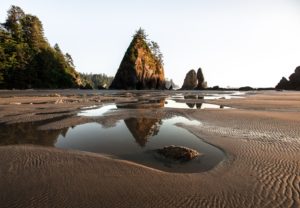
Tidepools at Shi Shi Beach
Finding Solitude by the Sea
Aside from a permit, a bear canister, a Makah rec pass and cash for a private parking lot, it’s also important to take a glance at the tide charts before you depart. While it’s tempting to camp on the beach (and you are allowed to), camping in designated spots just a few steps above the sand in the forest is a safer bet if you’re unsure of water levels. I found an incredible spot that already had a few pieces of driftwood placed around the fire pit to use as a bench, and as long as firewood is collected on the beach (and you’re choosing smaller pieces, rather than giant logs), campfires here are totally OK.
In my opinion, beach camping is the best camping, and when you have stunning views of the ocean after wandering through a lush forest, it’s one of the most incredible experiences you can have outdoors. The Olympic Peninsula is home to dozens of gorgeous and remote spots, and if you plan it right, you can find both stunning scenery and solitude by the sea.

